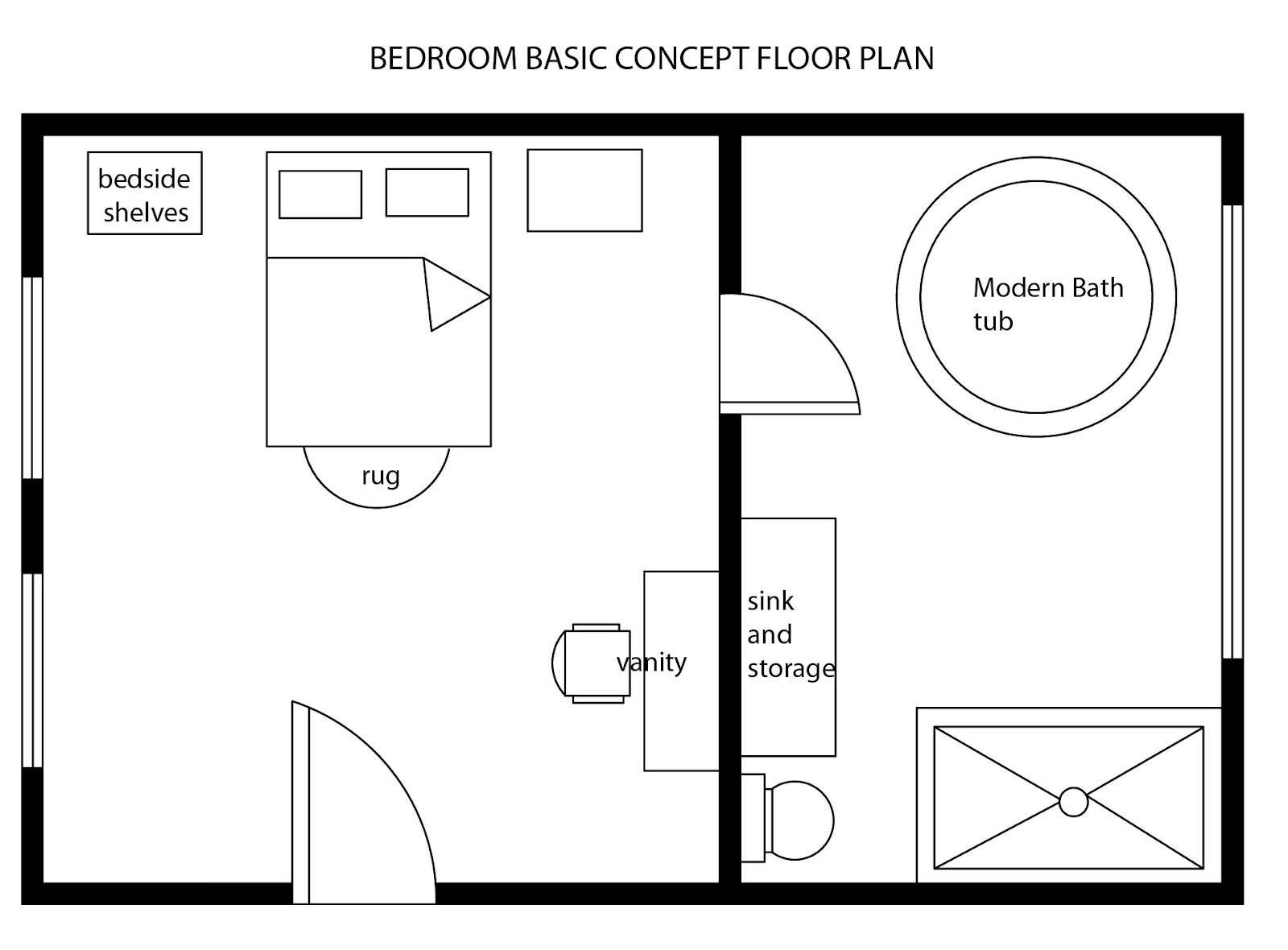Design Considerations for Non-Split Bedroom Floor Plans

While open floor plans offer a sense of spaciousness, it’s crucial to establish clear boundaries for different areas within the space. In a non-split bedroom floor plan, creating distinct zones is essential for functionality, privacy, and a sense of order.
Defining Sleeping Areas with Furniture, Lighting, and Decor
Utilizing furniture, lighting, and decor effectively can visually separate sleeping areas within an open floor plan. This approach allows for a cohesive flow while maintaining distinct zones.
- Furniture Placement: Strategically placing furniture, like a large headboard or a sofa, can act as a natural divider, creating a visual barrier between the sleeping area and other zones.
- Lighting: Implementing different lighting schemes for each zone can enhance the separation. For example, using soft, warm lighting in the sleeping area while incorporating brighter, task lighting in the living space can create a distinct ambiance.
- Decor: Employing contrasting color palettes, patterns, and textures for each zone can create visual interest and emphasize the boundaries. For example, using a bolder color scheme in the sleeping area and a more neutral palette in the living area can distinguish the zones.
Using Room Dividers, Curtains, or Screens for Privacy
Incorporating room dividers, curtains, or screens provides a practical and flexible way to create privacy when needed. These elements can be easily moved or removed, offering versatility and adaptability.
- Room Dividers: Room dividers, often made of wood, fabric, or metal, can be used to create a physical barrier between the sleeping area and other zones. They offer a more substantial separation compared to curtains or screens.
- Curtains: Drapery panels can be hung from the ceiling or mounted on a track, offering a lightweight and stylish solution for privacy. They can be drawn when privacy is desired and pulled back to open up the space when needed.
- Screens: Screens, typically made of wood or bamboo, provide a decorative and functional way to create privacy. They offer a lighter and more airy option compared to room dividers or curtains.
Practical Considerations for Non-Split Bedroom Floor Plans: Non Split Bedroom Floor Plans

Non-split bedroom floor plans, where bedrooms are not separated by a hallway, offer a unique blend of openness and connectedness. While they can be visually appealing and foster a sense of community, they also present practical considerations that need careful planning.
Pros and Cons of Non-Split Bedroom Floor Plans
Understanding the advantages and disadvantages of non-split bedroom floor plans is crucial for making an informed decision. Here’s a table summarizing the key points:
| Pros | Cons |
|---|---|
|
|
Maximizing Storage Space, Non split bedroom floor plans
Storage is a critical aspect of any home, and non-split bedroom layouts can pose unique challenges. Here are some tips to maximize storage in this type of floor plan:
- Utilize vertical space: Build-in shelves, wardrobes, or loft beds can help maximize vertical space, creating more storage without sacrificing floor area.
- Clever furniture choices: Opt for multi-functional furniture like beds with built-in storage compartments or ottomans with hidden storage spaces.
- Wall-mounted organizers: Use wall-mounted shelves, hooks, and organizers to keep items off the floor and create a clutter-free environment.
Addressing Noise and Privacy Concerns
Noise and privacy are common concerns in non-split bedroom layouts. Here are some solutions:
- Soundproofing: Employ sound-absorbing materials like thick curtains, rugs, or acoustic panels to minimize noise transmission between bedrooms.
- Strategic furniture placement: Place furniture strategically to create natural barriers between bedrooms, such as a bookshelf or a tall plant.
- Consider room dividers: Use room dividers to create visual and acoustic separation between bedrooms, offering a sense of privacy without completely closing off the space.
